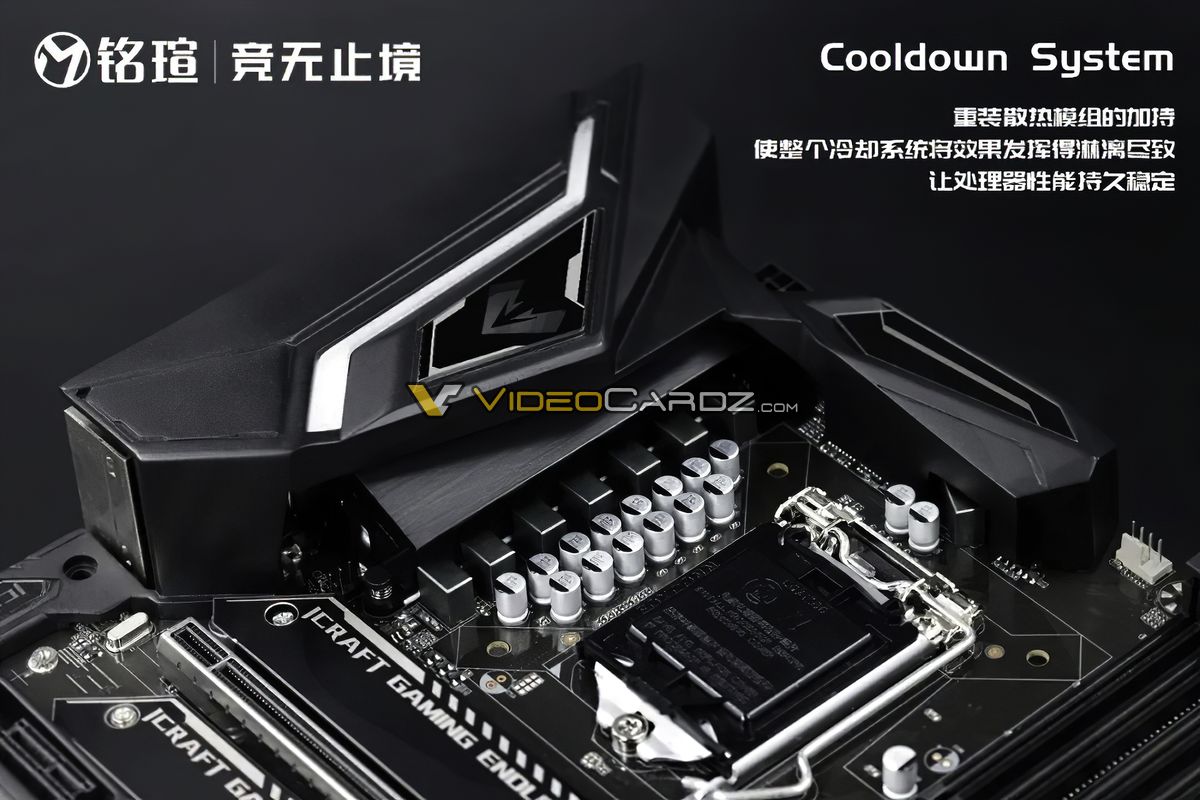Intel B460 Motherboards Could Land With Overclocking Functionality

VideoCardz has shared photographs of Maxsun's B460 iCraft Gaming Endless (MS-iCraft B460M) motherboard. More importantly, the leaked marketing materials suggest that Intel might enable overclocking on the upcoming B460 motherboards.
Out of the two chipmakers, AMD has always been more generous towards overclocking as the company enables the feature from the premium X-series chipsets all the way down to the A-series chipsets. Intel, on the other hand, only allows overclocking on the Z-series platform, which typically commands a hefty price tag. However, Intel can potentially replant its posture on overclocking with the new wave of 400-series motherboards for 10th Generation Comet Lake-S processors. Maxsun's motherboard appears to support that theory.
The B460 iCraft Gaming Endless seemingly features three little, intriguing buttons on the rear panel. They are labeled with "L," "C," and a lightning bolt symbol. For the moment, we're uncertain what buttons do or what they stand for. The short description, which contains a bit of marketing fluff, points to speeding up the processor with a single click. This could be a gimmick or an indication that B460 motherboards might have some level of overclocking.

It wasn't always impossible to overclock a non-K series processor. Back in the Sandy Bridge days, you could overclock certain locked models up to four bins (400 MHz) above their advertised turbo boost clock speed. It was even possible to overclock on some non-Z series motherboards, but Intel eventually brought that to a halt. As you can see, there's a precedent of overclocking on chipsets other than the Z-series.
During our tour of Intel's secret overclocking lab, we pitched the idea of enabling overclocking on B-and H-series chipsets to Intel. The chipmaker's major concern was the quality of the power delivery subsystems on non-Z series motherboards. In all fairness, B-and H-series motherboards are aimed at budget-oriented consumers. However, some of these low-cost offerings come with questionable power delivery subsystems so we can understand Intel's hesitation.
In Maxsun's case, the B460 iCraft Gaming Endless motherboard exposes a decent-looking eight-phase power delivery subsystem. The heatsink looks pretty robust, and, according to Maxsun, it helps maximize the system. It's unrealistic to think that Intel would outright permit unconditional overclocking on B460 motherboards because that would cannablize sales of the higher-end Z490 models. In other words, if Intel does enable overclocking, there's bound to be some type of limitation.
Given the segment the B460 chipset is designed for, the corresponding Intel motherboards are bound to compete with AMD's looming B550 motherboards, which will hit the market on June 16, 2020. AMD hasn't officially confirmed if overclocking is on the table, but given the chipmaker's history, the feature should be present. B550 motherboards will support the PCIe 4.0 interface, though, so that's one feature that Intel won't be able to match.
Get Tom's Hardware's best news and in-depth reviews, straight to your inbox.

Zhiye Liu is a news editor, memory reviewer, and SSD tester at Tom’s Hardware. Although he loves everything that’s hardware, he has a soft spot for CPUs, GPUs, and RAM.
-
AlistairAB False Intel worries about power delivery systems (like there aren't plenty of great non Z boards that can handle 4 or 6 cores for example, and plenty of Z motherboards that can't handle 8 properly). Even they unlock the motherboards, which would be a good first step, you'll still have to pay extra for the k overclockable CPU parts, so it won't be the same as AMD anyways. Chinese motherboards (and ASRock for example) have a history of allowing something until Intel's lawyers knock it down (I'm still mad about the microcode update that ruined my Pentium Anniversary).Reply -
mdd1963 It would be hard to predict that many of the most sought after future models (10700K, 10900K) as having 'gobs of headroom' left for overclocking anyway. If some mythical 10900K hits with a 5300 MHz top boost speed, I'd say it would be a small miracle to hit that on all cores, much less shoot for 5.4 GHz... (I figure if they had any headroom, Intel would probably already be using it..)Reply
Perhaps in a month, we'll know more, once real samples are reviewed... -
hotaru251 intel blocks it by choice relating to profit.Reply
same way they gouged ppl for $$ on cpu's thatwere barely better than others.
moment amd cameback with actual good cpus?
they cut prices by a lot as they couldnt rob ppl blindly anymore.
motherbaords are same way.
if they cant beat amd by a lot anymore they have to either change their low end (as amd is always better choice for price there) or pray their diehards make them not miss low end income and stay same as always. -
mitch074 AMD didn't need to lock overclocking on their recent chips : they are already pushed so close to the max, pushing them any further usually doesn't get you too far, and for the few chips they lock down (entry level Athlon CPUs) it's rather easily worked around (and it's quite telling that they didn't bother to fix it in their latest iterations). Still, even at a time when AMD was leading in performance (Athlon64), outside of a locked multiplier they really had nothing against overclocking (a 1600 MHz Sempron64 getting a 800MHz OC with its box cooler on a cheapo motherboard is SWEET - so is the 2.6 GHz Athlon II X4 620 getting pushed to 3.4 GHz on air).Reply
But yes, Intel has really been a d*ck when in comes to overclocking; not only a locked multiplier (unlocked with K series) but a locked reference clock (on ALL chips) too ?